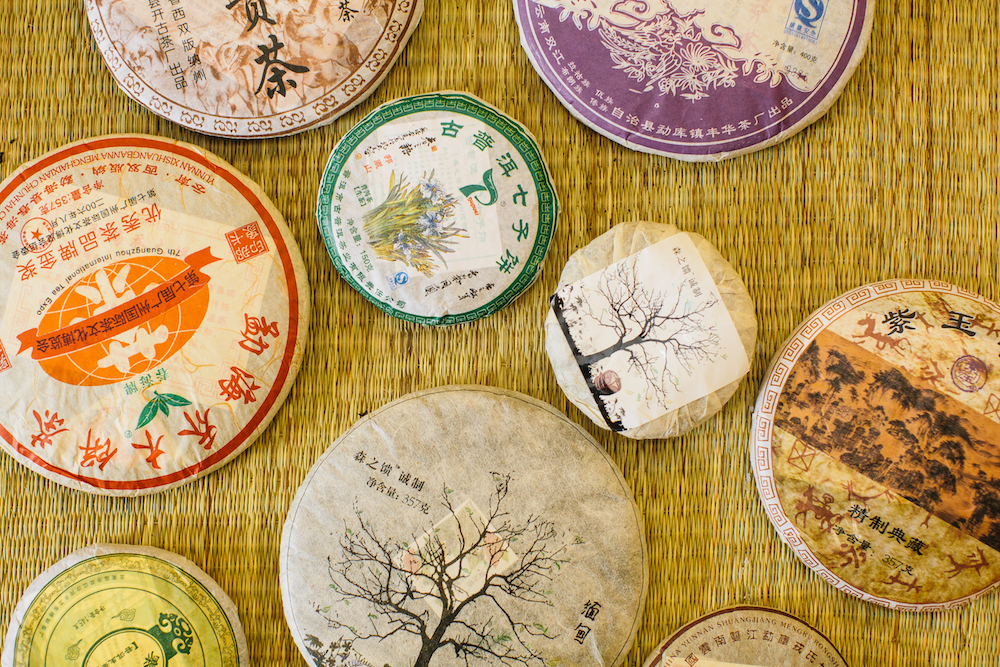Tea the Chinese way
The teas a Chinese medical practitioner might recommend are rather a departure from the box of Lipton tea bags in your pantry — but it’s well worth the trip to a Chinese herbal dispensary to learn more about this healing tradition. In Chinese medicine, medicinal teas or tonics are regularly prescribed to treat a range of issues, and drinking tea is also recommended as a preventive measure.
“There are medicinal teas and then there are regular teas that we drink for recreational use, such as green, black, white and red teas,” explains Rachel Nowakowski, a licensed acupuncturist at the Chinese Acupuncture Clinic in Montford. “Chinese medicinal teas are often bitter and may not be what someone would want to sit and sip. Medicinal teas are prescribed by a Chinese herbal medicine practitioner for an individual’s constitution and may be used long-term to support overall health.”
Nowakowski recommends a formula called jade screen that’s appropriate for everyone to drink — particularly in fall and winter:
Jade screen (yu ping feng san)
huang qi (astragalus)
bai zhu (atractylodes)
fang feng (ledebouriella/siler)
Jade screen is used to strengthen wei qi (the exterior defensive system) and boost the immune system. It can be consumed daily to prevent illness but shouldn’t generally be used once a cold or flu has begun.
For more information, visit ashevilleacupuncture.com.
Uplifting blends at Dobra Tea
Lindsay Thomas starts just about every day by sharing a pot of tea with her husband and son. We wouldn’t expect anything less from the husband-and-wife team that owns Dobra Tea outlets in Asheville and Black Mountain.
Thomas, who has a background in herbal medicine, formulated all of the herb blends on Dobra’s menu. And while those herbs are chosen for their healing properties, Thomas is also quick to emphasize the uplifting yet calming effect of all teas. “Humans and teas have been interacting for a really long time: There’s a really long story there,” she says. “When I pull out the tea jar, I just take a moment and try to be aware of what I’m feeling and take time to see the steam, and make tea in a mindful way.”
Green and white tea, continues Thomas, “seem to be most revered for their healing properties, although I feel like black and oolong and especially pu-erh tea are very healing as well. … Tea fosters equanimity as well as one’s ability to interact with life in a graceful and efficient way, continually offering the opportunity to be in the present moment.”
In her herbal blends, Thomas is partial to rose and marshmallow root — two ingredients you’ll see a lot of on Dobra’s menu. “Sometimes these immunity blends can be a little bit bitter or not as enjoyable to drink. … We’ve had a lot of fun trying to formulate blends that are super nourishing and really healthy but also really delicious. We think even the act of making the tea and sitting down and drinking it and enjoying it is really healing all in itself.” One of her favorite blends is called Lullaby:
Lullaby blend
linden
oat straw
marjoram
rose petals
star anise
Lullaby, the menu reveals, was “inspired by ancient Druid herbology. Marjoram leaf specifically opens a bridge between the waking and sleeping worlds. Allow this tisane to lull you into deeper states of calm.”
For more information, visit dobrateanc.com.
Pu-erh at Panther Moon Tea Bar
Sumitra D’Aragon is pretty serious about pu-erh tea. Sunday through Tuesday, you can find her in the West Village Market pouring in the traditional gongfu style of China’s Guangdong province, using small, porous, Yixing clay pots with multiple infusions. D’Aragon talks tea with the knowledge and reverence of a wine connoisseur, and indeed, some pu-erh teas are aged like wines: One in D’Aragon’s collection is over 20 years old.
D’Aragon built her business around this particular type of tea because of its powerful healing properties. “It’s known in China as the tea of happiness,” she explains, “So it’s known to actually improve your mood. I find that it also expands consciousness a bit. … We know that tea has been an ally to the monks for many years.”
D’Aragon carries both raw pu-erh, which is fermented for up to 75 days, and ripe pu-erh, which naturally ferments for 5 to 15 years. Both have an earthy, slightly bitter taste, but as the raw tea ages, it becomes more mellow and sweet. In China, says D’Aragon, elders drink raw pu-erh to support anti-aging, brain health and digestion, among other purported benefits. In Chinese medicine, it’s said to promote the flow of qi and improve circulation. “It also increases connection among people, and that’s a real health benefit,” she points out.
D’Aragon also recommends jiaogulan tea (gynostemma). Panther Moon carries a wild jiaogulan from Yunnan that’s mixed with Chinese globeflower and goji berries to create a tonic tea. Sometimes called the “poor man’s ginseng,” it’s widely consumed in southern China for its numerous health benefits. This anti-oxidant-rich tea is said to lower blood sugar, brighten consciousness and elevate the spirit without caffeine.
For more information, visit panthermoontea.com.




Nice article, thanks. There is a significant correction, however. Ripe or Shou puerh is fermented under controlled conditions for 75-90 days. Raw or Sheng puerh naturally transforms over time due to microbial activity. A sheng puerh starts to be considered “aged” at about 10 years; the older the better in most cases with a premium sheng. Thanks!
One of things that I will maintain is to drink tea as I grow older.
http://theteasupply.com/
Greetings,
How are you? I am contacting you to, first and foremost, congratulate you on the article. I enjoyed reading it. I love health and wellness, & I would love to stay in contact with you, as I am currently in the process of starting my own healthy food truck in the MD area.